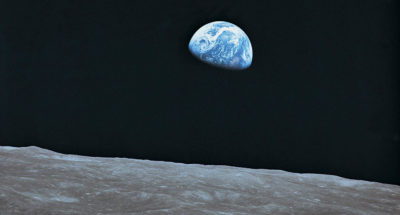
Earthrise: Bearing Witness to Our Planet
Students watch the film Earthrise and reflect on the power of bearing witness.

Students watch the film Earthrise and reflect on the power of bearing witness.
Students will:
This practice is the second in a series of three practices on the Earthrise photograph: Earthrise Photograph: Fostering Awe (Practice #1) and Earthrise Photograph: Cultivating Global Citizenship (Practice #3); it can also be done on its own. If using this practice with the other two, you may skip the initial viewing of Earthrise in Part 1 below.
This practice was written by the Global Oneness Project.
The Global Oneness Project is a free multimedia platform that brings the world’s culture alive in the classroom by using stories as a pedagogical tool for growing minds. Their collection of documentary films, photo essays, and lesson plans highlight cultural, environmental, and social issues with universal themes including our common humanity.
https://www.globalonenessproject.org/
To access the entire Earthrise curriculum, visit the Global Oneness Project.
The film Earthrise was nominated for a Webby Award for the best video in the science and education category. In addition, Earthrise was a finalist in the Creativity category for Fast Company’s World Changing Ideas Awards.
How did students respond to the practice of bearing witness? Do you notice whether students respond more thoughtfully to new ideas or to each other?
“Bearing witness” is often considered a contemplative practice that can help cultivate a mindful way of being in the world.
While research on the effects of mindfulness on children is still in the early stages, a 2016 review of 12 studies suggests some promising outcomes for young children relative to attention, self-regulation, and motor skills. A 2014 meta-analysis that focuses on 24 studies of K-12 students showed demonstrated changes in students’ attention and resilience to stress, including positive emotions, self-esteem and self-concept, and well-being.
In a world of distractions, few of us take the time to absorb a photo, a work of art, or something extraordinary and awe-inspiring, letting the experience wash over us and then noticing our thoughts, beliefs, or emotions as a result.
Providing students with an experience of bearing witness allows them to see what it feels like to stop for a moment and see the world in a different way—a practice that can help to navigate daily challenges and also to engage more deeply and meaningfully with this beautiful thing called “life.”

Are you ready to build a kinder, happier school where everyone belongs? Join Greater Good Educators! Explore the science of well-being in a supportive community of educators from around the world. Registration is now open for the 2025-2026 school year!
Comments